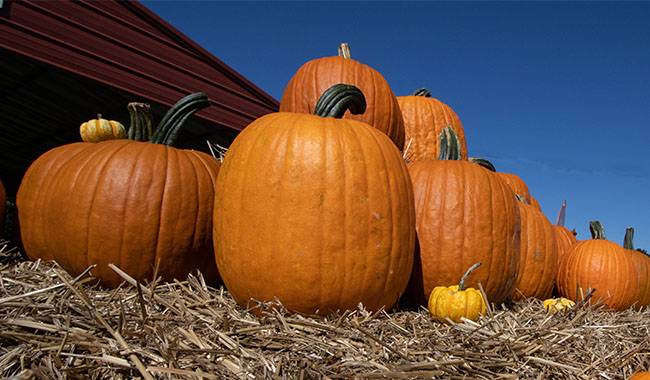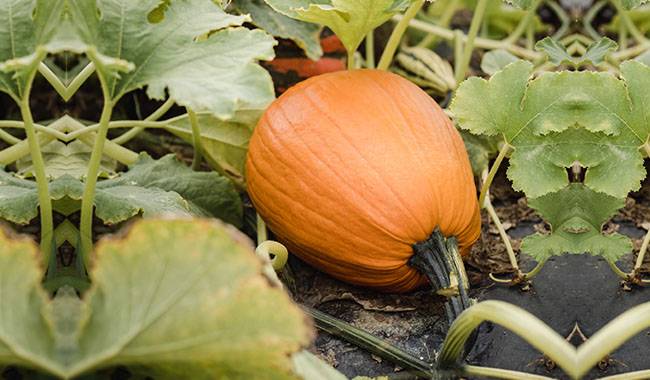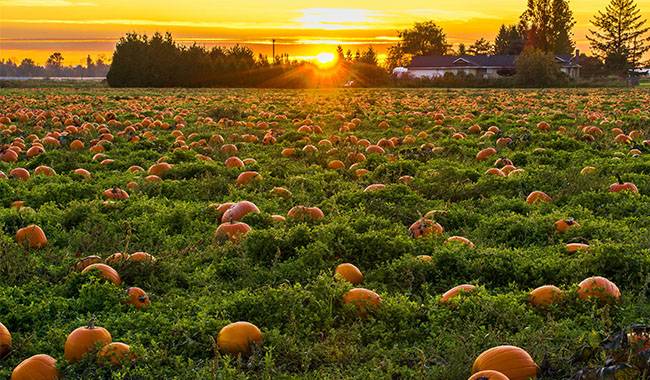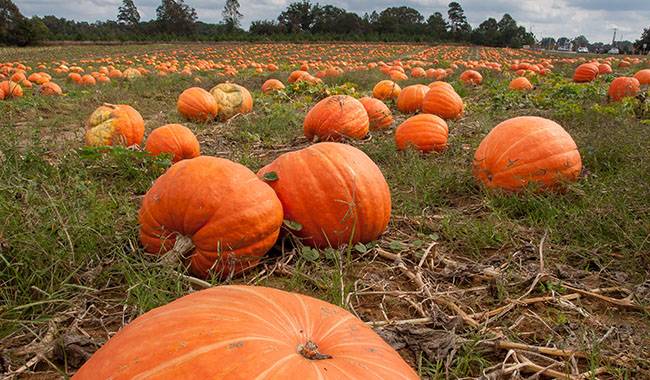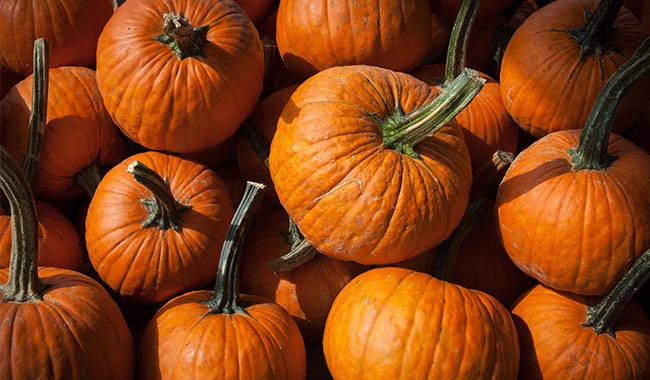
Did you know that 100 grams of pumpkin contain only about 25 kcal? And this is most rich in vitamins and minerals!
Pumpkin is absolutely good for everyone – adults and children alike. Moreover, in any form – boiled, fried, roasted, or even in the form of preserves – pumpkin hardly ever loses its properties.
But it is most useful, of course, when eaten raw. In this article, we will talk about the usefulness and medicinal properties of pumpkin, its use in folk medicine, and the correct (preserving all its usefulness) way of storing it.
PUMPKIN – BOTANICAL CHARACTERISTICS
The common pumpkin (Cucurbita pepo L.) belongs to the pumpkin family. It includes about 700 species. In addition to pumpkin close relatives are cucumber, zucchini, pâtissoni, watermelon, and melon.
Pumpkin is an annual plant native to the arid regions of Central America. Everyone who grows vegetables is familiar with its stalks, sometimes upwards of 16 feet (5 meters) long, with large, stiff leaves and large, beautiful flowers. The roots of the cucurbit grow to a depth of 10-13foot (3-4 m.) The flowers bloom in July and the fruit ripens in September.
It is a very heat and light-loving crop that prefers rich soil and grows well on compost. Interestingly, scientists consider pumpkin to be a berry, but gardeners are used to thinking of it as a vegetable.
It is interesting to note that it has never been found in its wild form. Pumpkin is grown throughout the territory as a vegetable and as fodder, oil (derived from the seeds), and ornamental crop.
CHEMICAL COMPOSITION AND USEFUL PROPERTIES OF PUMPKIN
Pumpkin pulp consists of 90% water and contains amino acids, proteins, carbohydrates, pectin, salts of potassium, magnesium, iron, fluorine, calcium, zinc, manganese, iodine and copper, vitamins B1, B2, C, PP, E, D, beta-carotene and vitamin T. In the seeds – fatty oils, phytosterols, organic acids, resins, carotenoids, vitamins C, B1, B2.
Pumpkin seeds are resistant to insects, dried seeds do not lose their properties within 2 years. It is necessary to dry them only in the air, in any case, do not use a dryer or oven, because all useful properties will be lost.
Pumpkin contains a lot of fiber and organic acids, so it is included in the diet for gastrointestinal disorders. In addition, there is a lot of pectin in the pulp, which is helpful in inflammatory diseases of the colon. As we all know, pectin removes toxins, impurities, and cholesterol from the body, so pumpkin is a good thing to eat for people with atherosclerosis.
This plant berry has a laxative effect. It is helpful in cardiovascular diseases because it has many salts of potassium, and anemia – it is rich in iron.
Pumpkin is a low-calorie product, so in case of obesity, it is recommended to eat it. In addition, it speeds up the metabolism and rare vitamin T prevents the accumulation of fat cells, so pumpkin is recommended by nutritionists all over the world.
Very useful is the day of discharge on the pumpkin. Pumpkin pulp has a diuretic effect, which is good for cleansing the whole body.
In ancient times, it was believed that such a dietary treatment was always helpful and never harmful, even in large doses. It is used for all kinds of swelling, especially for diseases of the cardiovascular system, gout, kidney, and bladder diseases.
Pumpkin is good for the eyes and also, due to its high carotenoid content, it is a good antioxidant that prevents the body from aging.
Pumpkin is also good for men’s health. The seeds contain vitamin E, zinc, and L-arginine which have a positive effect on the prostate.
USES OF PUMPKIN IN TRADITIONAL MEDICINE
Pumpkin seeds, after shelling, have been used for centuries in folk medicine as a medicinal insect repellent. The membrane around the seeds contains the substance cucurbitacin. This remedy is very effective in the treatment of roundworms, tapeworms, and diseases of the genitourinary tract.
In official medicine, only the common pumpkin is used, as well as the large seeds of pumpkin and pumpkin muscaria.
It is recommended that you consume raw pumpkin seeds – up to three cups per day (but remember that they are very high in calories), either by drinking them or mixing them with buckwheat in porridge, and you can grind the seeds with honey.
Since there are almost no side effects, it is recommended to use such remedies when necessary, and pregnant women and children can also use them. By the way, fried seeds lose their useful properties.
In addition, folk healers recommend drinking pumpkin pulp juice for diseases of the kidneys and liver, 1 cup per day. In the old days, pumpkin pulp was wrapped around inflamed areas of the body and used to treat burns, pimples, rashes, eczema.
Modern doctors recommend pumpkin for arteriosclerosis, constipation, gout, gallstone disease. Pumpkin may reduce nausea in pregnancy toxemia. A decoction of pumpkin and honey is prescribed for insomnia.
Fresh pumpkin pulp juice boosts immunity, so it is designated for colds and flu. Pumpkin seed oil is useful in diseases of the liver and urinary system, normalizes the function of the intestines, and improves immunity. Modern science has proven that pumpkin can prevent esophageal cancer due to its high zinc content.
DECOCTION AND INFUSION OF PUMPKIN LEAVES AND FLOWERS
Interestingly, even pumpkin leaves have medicinal value – antioxidant and anti-inflammatory. And thanks to their high content of vitamin C – wound healing properties.
Decoctions and infusions of pumpkin leaves are used to treat gums, as well as to lower blood sugar levels and boost immunity for SARS prevention.
To prepare an infusion, take two tablespoons of dried pumpkin leaves and fill them with 200 ml of boiling water. It is easy to make in a thermos. You can do it in an enamel pot, but you will have to put it in a warm-cool oven (the oven temperature should not exceed 100 ° C).
Infusion, so it should be boiled for 15 minutes. Then cool at room temperature. If necessary, the volume can be increased to 200 ml. And you can drink 1/2 cup twice a day to improve immunity. And in case of swollen and painful gums, gargle with this remedy 2-3 times a day.
Pumpkin flowers can cure cough, for which a decoction of pumpkin flowers is prepared.
The decoction of pumpkin flowers and leaves is made as follows. 2 tablespoons of dried pumpkin flowers (or leaves) are poured into 200 ml of boiling water and cooked on a water bath for 30 minutes with a low fire. Then also let it cool to a volume of 200 ml (if necessary) and take 1/2 cup twice a day.
Please note! In addition to the great benefits of pumpkin, it can also be harmful. Pumpkin juice contains a lot of sugar, so it is not recommended for diabetics. Pumpkin juice, like all raw juices, can also trigger gastritis, stomach, or duodenal ulcers.
PUMPKIN CAN BE BEAUTY CARE
Pumpkin is also used for cosmetic purposes. A mask made from the pulp of the seeds or the cooked pulp can moisturize, brighten and rejuvenate the skin. Pumpkin seed oil can soothe skin inflammation. In addition, because of its high vitamin content, it can strengthen the nail bed if rubbed on the nail plate regularly.
HOW TO STORE PUMPKIN TO PRESERVE ITS USEFUL PROPERTIES?
It is very important to know how to store pumpkin properly so that it retains all its useful substances. To do this, you should cut ripe pumpkins into (5-6 cm) lengths along with the peduncles and let them lie somewhere on the street for a few days so they dry out a bit.
Such pumpkins will keep better. The main thing is that the weather is dry and sunny for a few days.
Next, you can store the pumpkins at room temperature, but it is best to store them in a cool, dark place at 41-46°F (5-8°C), for example, in a cellar.
Pumpkin is capable of retaining its nutritional and medicinal properties for several years, but it is better to eat it in the first few months. It tolerates freezing perfectly well and retains almost all of its useful properties.
For freezing, I wash, peel and cut the freshly cut pumpkin into small 0.8×0.8inch (2×2 cm) pieces, put them in a bag, put them in the freezer, and keep them until the next harvest. Such pumpkins can be used to make porridge or soup. By the way, the larger the pumpkin, the less sugar it has.




